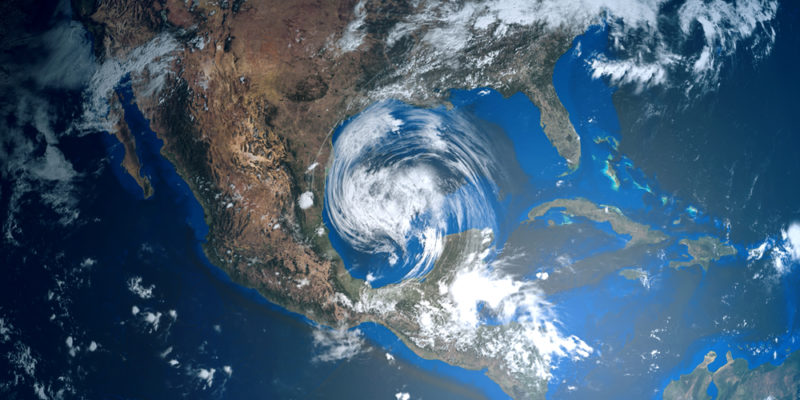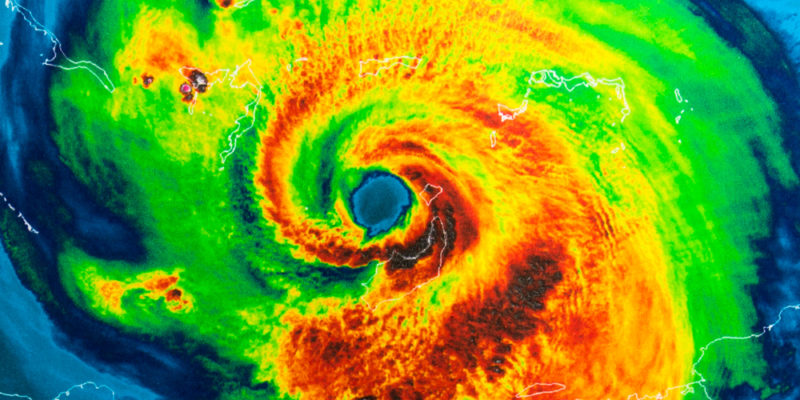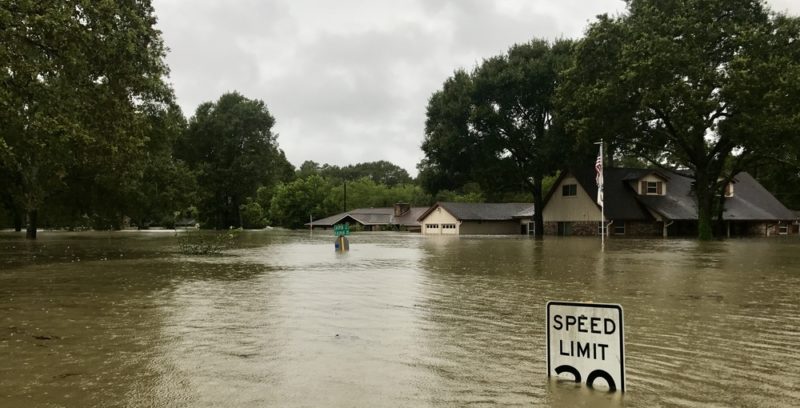We explore hurricanes, and explain their structure and classification. In addition, we discuss their general characteristics, effects, and more.

What is a hurricane?
A hurricane is a type of tropical cyclone characterized by high winds, thunderstorms, and heavy rainfall. The storm area of the largest hurricanes can exceed 620 miles (1,000 km) in diameter.
This phenomenon is common in the Northeast Pacific basin and the North Atlantic, especially in the Caribbean Sea and the Gulf of Mexico. Due to the intensity of the storms and the large extent of the areas they affect, hurricanes can cause significant property damage and great loss of human and animal life.
Hurricanes are classified on the Saffir-Simpson scale into five categories, from the least to the most destructive. To be considered a hurricane, tropical cyclones must present winds of at least 73 miles (118 km) per hour.
- See also: Hurricane Patricia
Hurricane formation and structure

Hurricanes form over the ocean surface from the combination of three elements:
- A high-temperature zone in the atmosphere, as hurricanes need warm air to form.
- High temperatures in ocean waters, as hurricanes need warm water to form.
- High humidity in the atmosphere, as clouds, rain, and hurricane storms need humidity to form.
When these three factors combine, warm, moist air rises from the ocean surface. As it gains altitude, it cools, and condenses its water vapor particles forming clouds. As the storm develops further, clouds become larger, more warm, moist air accumulates, and a wind spiral forms creating a hurricane.
Hurricanes have a rotating wind structure around an eye or low pressure center, which can reach 31 miles (50 km) in width. Within this eye, a relative calm occurs, while around it, the storms and winds that generate the hurricane take place.
Hurricane categories
Hurricanes are classified according to their intensity on the Saffir-Simpson scale, which establishes five categories depending on wind speed:
- Category 1. Winds between 73 to 95 miles (118 and 153 km) per hour.
- Category 2. Winds between 96 to 110 miles (154 and 177 km) per hour.
- Category 3. Winds between 111 to 129 miles (178 and 209 km) per hour.
- Category 4. Winds between 130 to 155 miles (210 and 249 km) per hour.
- Category 5. Winds exceeding 156 miles (250 km) per hour.
Where and when do hurricanes occur?
The areas with the highest occurrence of hurricanes are the North Atlantic Ocean and the Eastern Pacific. In the North Atlantic, hurricanes are more frequent and intense in the Caribbean Sea and the Gulf of Mexico, while in the Pacific, they occur mainly on the coastlines of the Philippines, China, and Japan.
As hurricanes require warm air and water to form, they are much more common in the warmer months. For this reason, the hurricane season extends from June to November, that is, when it is summer in the Northern Hemisphere.
Hurricanes occurring in the Eastern Pacific are called typhoons. The atmospheric phenomenon is the same as a hurricane, but the name changes depending on the region of the planet where it occurs.
Effects of hurricanes

The main effects of hurricanes include:
- Flooding. Storms accompanying hurricanes often cause flooding covering large affected areas.
- Damage to infrastructure. Winds and storms can destroy roads, bridges, ports, buildings, and infrastructure in general.
- Interruption of public services. Hurricanes often cause widespread power outages due to damage to electrical infrastructure, as well as water and connectivity service interruptions. They also hinder airport activity and commercial flights.
- Loss of life and population displacement. Hurricanes often result in the loss of human and animal life. When large areas are impacted and reconstruction is slow and difficult, many choose to leave their homes moving to unaffected areas.
Hurricane monitoring and prevention
Organizations dedicated to monitoring hurricanes provide information on when and where they will form, their possible path, and the zone and date they will make landfall. In this way, warning and prevention strategies can be established to prepare populations in areas that might be affected by the hurricane’s wake.
The major organizations charged with monitoring hurricanes in the North Atlantic and the Pacific are:
- National Hurricane Center (NHC). Based in Miami, Florida, it is part of the United States National Oceanic and Atmospheric Administration (NOAA). It is the principal organization responsible for monitoring and forecasting hurricanes in the North Atlantic, including the Gulf of Mexico and the Caribbean Sea.
- Japan Meteorological Agency (JMA). It monitors and forecasts typhoons in the Northwestern Pacific, especially in areas near Japan.
- Philippine Atmospheric, Geophysical and Astronomical Services Administration (PAGASA). The national meteorological agency of the Philippines, it is charged with monitoring and forecasting hurricanes in that country.
Hurricane names
Since 1950, hurricanes have been identified with personal names. Initially, they were given female names, but starting in 1970, male names have also been used.
The names are chosen in alphabetical order. Thus, the name of the first storm will begin with the letter A, the second with B, and so on with subsequent hurricanes.
This also serves to identify the number of storms that occurred in a given season. For example, Hurricane Ivan was the ninth hurricane of the 2004 season.
Worst hurricanes in history
Some of the most devastating hurricanes in recent history have been:
- Hurricane Mitch. It occurred in 1998, affecting Central America, the Yucatan Peninsula, and Florida. Its winds exceeded 174 miles (280 km) per hour. It is estimated to have caused over 19,000 deaths.
- Hurricane Katrina. It happened in 2005, mainly affecting the city of New Orleans, United States. It is believed to have caused the greatest economic loss for a hurricane.
- Hurricane Patricia. It happened in 2015, affecting Central America, Mexico, and the southern United States. With wind speeds of over 214 miles (345 km) per hour, they are believed to have been the highest ever recorded for a hurricane.
References
- CNE. (2023). ¿Qué es un huracán?. Comisión Nacional de Prevención de Riesgos y Atención de Emergencias de Costa Rica. https://www.cne.go.cr/
- National Geographic. (2022). ¿Qué es un huracán?. https://www.nationalgeographicla.com/
- Romero, S. (2023). Los huracanes más devastadores de la historia. Muy Interesante. https://www.muyinteresante.es/
Explore next:
Was this information useful to you?
Yes NoThank you for visiting us :)